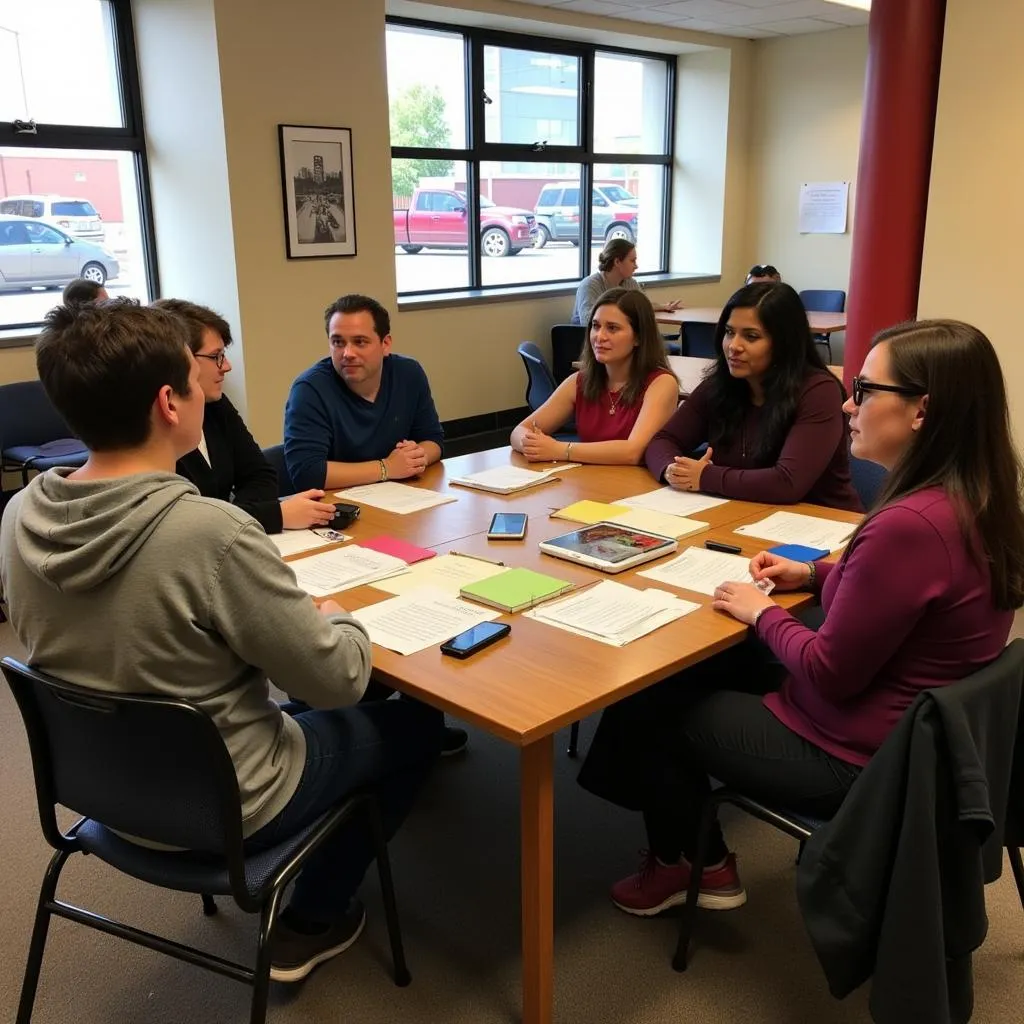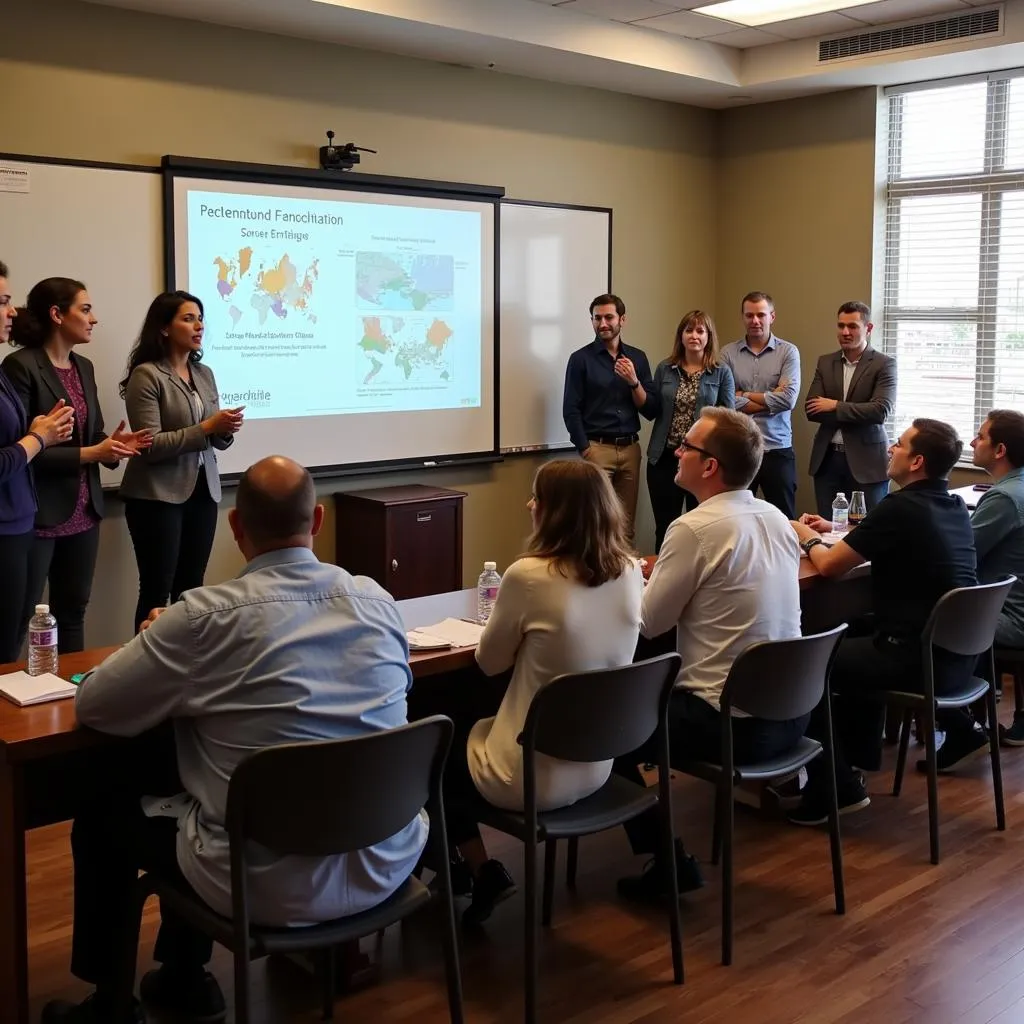Community-based participatory action research (CBPAR) is more than just a mouthful; it’s a powerful approach to research that places communities at the heart of the process. This method emphasizes collaboration, equity, and social justice, ensuring that research benefits the community involved.
 Community members gather to discuss a research project.
Community members gather to discuss a research project.
Understanding CBPAR: Key Principles and Goals
CBPAR operates on the core principle that those most affected by the issues being researched should be active participants in shaping the research questions, methodology, data collection, analysis, and dissemination of findings. This participatory approach empowers communities to:
- Identify their own priorities: Communities determine the research questions most relevant to their needs and concerns.
- Shape the research process: Community members actively contribute to designing and implementing the research, ensuring its cultural sensitivity and relevance.
- Analyze and interpret data: Communities are involved in making sense of the findings, leading to a more nuanced and context-specific understanding.
- Take action based on findings: CBPAR emphasizes translating research into tangible actions and solutions that directly address community-identified problems.
Why is CBPAR Important? Bridging the Gap
Traditional research often fails to adequately address the complex realities of marginalized communities. CBPAR bridges this gap by:
- Ensuring cultural relevance: By involving community members, CBPAR guarantees that the research methods and interpretations are culturally appropriate and meaningful.
- Promoting equity and justice: CBPAR challenges power imbalances inherent in traditional research, giving voice to marginalized communities and amplifying their perspectives.
- Fostering trust and ownership: The collaborative nature of CBPAR builds trust between researchers and communities, leading to greater ownership and sustainability of research outcomes.
 A researcher conducts an interview with a community member.
A researcher conducts an interview with a community member.
How Does CBPAR Work? A Collaborative Journey
CBPAR projects are characterized by a cyclical and iterative process that involves:
- Building Relationships: Establishing trust and rapport between researchers and community members is paramount.
- Defining the Issue: Collaboratively identifying and clearly defining the research question or problem is crucial.
- Developing the Research Plan: Working together to design the methodology, data collection methods, and analysis plan ensures community ownership.
- Collecting and Analyzing Data: Community members are actively involved in gathering data and interpreting the findings, ensuring accurate and culturally sensitive analysis.
- Disseminating Findings and Taking Action: Sharing the results with the community and translating research into concrete actions that address the identified issues is central to CBPAR.
Examples of CBPAR in Action: Real-World Impact
CBPAR has been successfully employed across various fields, including:
- Public Health: Addressing health disparities, improving access to healthcare, and promoting healthy behaviors within marginalized communities.
- Environmental Justice: Investigating the disproportionate impact of environmental hazards on minority communities and advocating for equitable solutions.
- Education: Exploring educational inequalities, improving school climate, and empowering students and families to advocate for better educational opportunities.
 Community members present their research findings at a community forum.
Community members present their research findings at a community forum.
Challenges and Considerations in CBPAR: Navigating Complexity
While CBPAR offers a transformative approach to research, it’s essential to acknowledge potential challenges:
- Building and Maintaining Trust: Establishing genuine and lasting trust between researchers and communities requires ongoing effort and open communication.
- Ensuring Equitable Partnerships: Navigating power dynamics and ensuring that all voices are heard and valued throughout the research process is crucial.
- Securing Sustainable Funding: CBPAR projects often require long-term funding commitments to support community involvement and ensure the sustainability of outcomes.
Conclusion: Embracing the Power of Community
Community-based participatory action research (CBPAR) is a powerful tool for social change. By prioritizing community involvement, CBPAR ensures research is relevant, ethical, and leads to tangible improvements in the lives of those most affected. Embracing this collaborative approach allows us to bridge the gap between research and action, creating a more just and equitable future for all.
FAQ: Frequently Asked Questions
1. What is the main difference between CBPAR and traditional research?
CBPAR centers community involvement and action throughout all stages of the research process, ensuring research benefits the community directly. Traditional research often lacks this collaborative and participatory element.
2. Who can benefit from using CBPAR?
CBPAR is beneficial for researchers, community organizations, policymakers, and, most importantly, the communities themselves, particularly marginalized groups facing systemic inequities.
Need Help with Your CBPAR Journey?
Contact us at:
Phone: 0904826292
Email: research@gmail.com
Or visit us at:
No. 31, Alley 142/7, P. Phú Viên, Bồ Đề, Long Biên, Hà Nội, Việt Nam.
Our dedicated team is available 24/7 to provide support and guidance for your CBPAR endeavors.